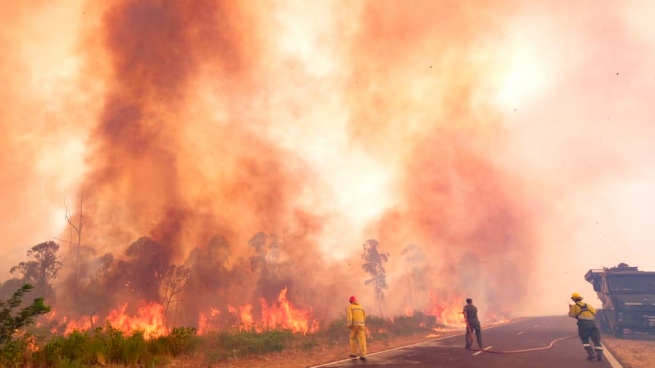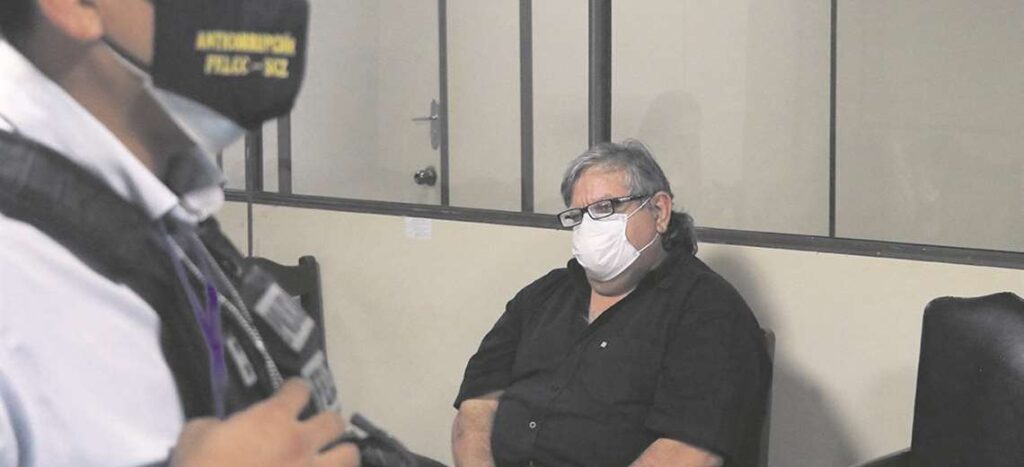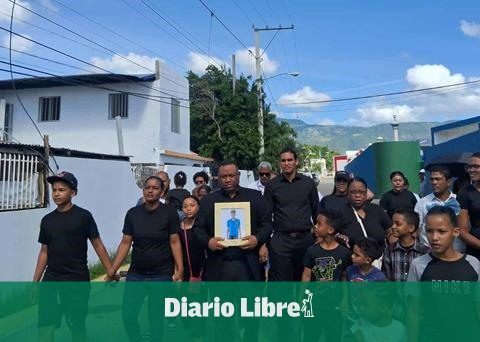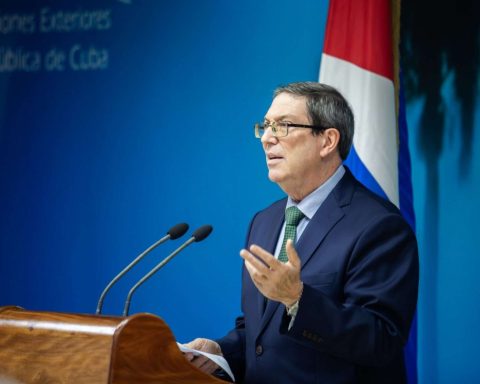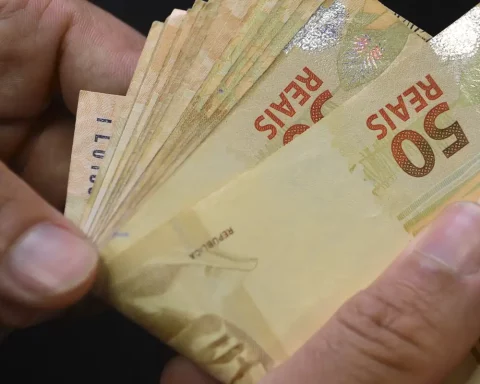Corrientes remains in a state of emergency due to more than a dozen active fire outbreaks, which mainly affect the north of the province, for which the Nation reinforced its package of mitigation measures with the management of international aid, official sources said Monday.
The Minister of Environment and Sustainable Development, Juan Cabandié, attended this Monday, and for an indefinite period, in Corrientes, where he met in the afternoon with Governor Gustavo Valdés.
In this regard, the national official communicated through Twitter that, together with Valdés, “We continue to coordinate fire fighting actions in the province”.
Together with the governor of Corrientes, @gustavovaldesokand @inesbarboza the @MindefArgwe continue to coordinate fire fighting actions in the province. pic.twitter.com/eewEfl4dwb
– Juan Cabandié (@juancabandie) February 21, 2022
Sources from the environmental portfolio told Telam that Cabandié visited San Alonso this Monday afternoon, a place in the Iberá Wetlands, while the deputy minister of the area, Sergio Federovisky, was monitoring the territory in the Ituzaingó area.
This is the north of the province, where from the coast of the Paraná River to that of Uruguay, more than a dozen fires remained active, according to local and national sources.
Cabandié, who in addition to Federovisky was accompanied by the director of the National Fire Management Service (SNMF), Alberto Seufferheld; and the Secretary of Military Coordination in Emergencies of the Ministry of Defense, Inés Barboza, toured a brigade camp located in the town of San Miguel, Corrientes.
On the occasion, the national official expressed: “The situation is very complex. There are scattered fires in various parts of the province, which makes it more difficult. Fields continue to be lit, there is a deep-rooted practice of lighting them,” he added.
Likewise, regarding this type of practice, the head of the national environmental portfolio explained: “The fire is part of the cleaning of the fields, what is called controlled burning, but it is no longer possible to control it due to the consequences of climate change.. We have proposed that within each province the practice of burning be considerably limited because we are in the framework of an igneous and hydric emergency”.
The diagnosis of the day was “relative relief,” Federovisky told Telam, explaining that although the temperature decreased, there were cloudy skies and some rains were recorded, they were not in the expected amount.
Given the urgency for rural fires, the national State managed in the last few hours the specialized collaboration for fire fighting in Corrientes from Russia, France, the United States and Chile, official sources reported.

“Everyone has been extremely receptive and required precision of the situation in Corrientes to meet the requirements such as airplanes or helicopters, for example,” Federovisky told Telam.
“The forecasts are complex, so it is impossible to say what will happen in the next few hours, but we expected more rain for the weekend as well as for today (on Monday) and that happened to a lesser extent, so we can say that the relief it is relative”, added Federovisky to Télam.
how is the weather
On the other hand, the National Meteorological Service (SMN) issued this Monday a weather alert for heavy rains, gusts and occasional hail in the cities of Bella Vista, Concepción, Curuzú Cuatiá, Empedrado, Goya, General Paz, Ituzaingó, Lavalle. , Mburucuyá, Mercedes, Saladas, San Luis del Palmar, San Miguel and San Roque, some of them affected by the fires that develop in the province.
The national government, through the SNMF, continues to deploy human resources, equipment and aerial means to fight forest fires in the region.
In this context, the president Alberto Fernández affirmed that the Government did everything in its power to assist Corrientes in the emergency declared by the fires that affected more than 700,000 hectares of the province and clarified that his administration “did not engage in politics or write tweets.” about that situation.
During the inauguration of the new multi-sports stadium in Santa Clara del Mar, in the Buenos Aires match of Mar Chiquita, the head of state added: “many are now concerned to see what we did in Corrientes in the face of the tragedy experienced by that province, which obviously calls the attention of all of Argentina” and remarked that last weekend, and before too, he was speaking with the governor (of Corrientes, Gustavo Valdés) to find out about the situation.
For his part, the Minister of Agriculture, Julián Domínguez, announced that The Government is working on an emergency plan for livestock in Corrienteswhich includes the transfer of animals, and assured that “the problem of Corrientes becomes a national problem” due to the reduction in the supply of meat in the national and export markets.
From the city of Mercedes in Corrientes, the minister announced that he is working on an “immediate contingency plan for livestock and a medium-term plan for the rest of the chains; a medium-long five-year plan for productive recovery, with INTA and Senasa and in coordination with the Minister of Production of the province of Corrientes”.
He indicated that the livestock in this province has 4.6 million heads and represents “more than 10% of the total livestock and 20% of the wombs.”
“We had a work program that had to be modified. Of the 300,000 hectares burned -which were three weeks ago- today we are close to 800,000, more than 12% of the province, especially affecting the livestock area”Domínguez told El Destape Radio.
He pointed out that the situation of the provincial livestock that includes 27,000 producers, of which 80% are SMEs, “complicates more than a million and a half heads that were already missing in Argentina.”
In turn, the Federal Administration of Public Revenues (AFIP) announced on Monday that it will implement a set of fiscal relief measures for taxpayers affected by the fires in the province of Corrientes.
The agency specified that among the tools that it analyzes to implement on Tuesday, the agency includes the suspension of fiscal executions and the blocking of embargoes.
The extension of filing deadlines for DDJJ and the payment of certain obligations are also analyzed.
Meanwhile, the General Directorate of Customs (DGA) expedited the entry into the country of fire trucks sent from Brazil to help fight the fires in Corrientes.
In this way, the AFIP joins the assistance measures for those affected by the fires in the province of Corrientes, as announced on Sunday with the granting of credits at subsidized rates for about $500 million or the contribution of the agricultural portfolio for another $200 million.
In turn, the governor of Corrientes Valdés reported through Twitter that he required formal help from the European Union, while 70 brigade members from Bolivia arrived.
#Bolivia sent brigade members to fight the fires in #Currentsgesture of humanism, solidarity and brotherhood that I thank the president @LuchoXBolivia ?? ??
– Gustavo Valdés (@gustavovaldesok) February 21, 2022
“This is a management undertaken by the Argentine State and particularly by Ambassador Ariel Basteiro; these specialists will arrive tomorrow,” the official told Telam.
Corrientes received the collaboration of brigade members from southern Brazil over the weekend, which is why Governor Gustavo Valdés had thanked the president of the neighboring country, Jair Bolsonaro.
Likewise, two fire trucks with members of the Forestry Brigade of the Undersecretary of Civil Defense of Salta left today for the department of San Miguel, Corrientes, to add operational and human resources in the tasks of suffocating the fires that are registered, with which adds efforts to the collaboration of another ten provinces as well as the City of Buenos Aires.
In the province of Corrientes there are 159 brigade members and support staff called by the SNMF and National Parks. Likewise, a total of 12 air assets operate between the two provinces (seven hydrant planes, an observer plane, four helicopters belonging to the SNMF, the Ministry of Defense and the province of Córdoba) that work jointly in firefighting.
As for the 70 forestry brigade members from Bolivia summoned by the SNMF, they are members who were trained last year by the SNMF within the framework of a cooperation agreement sealed between Argentina and Bolivia.
The Ministry led by Cabandié also formed a work commission for the provinces of Corrientes and Chaco to coordinate joint actions with the aim of rescuing, containing and reinserting endangered wildlife species due to forest fires.
